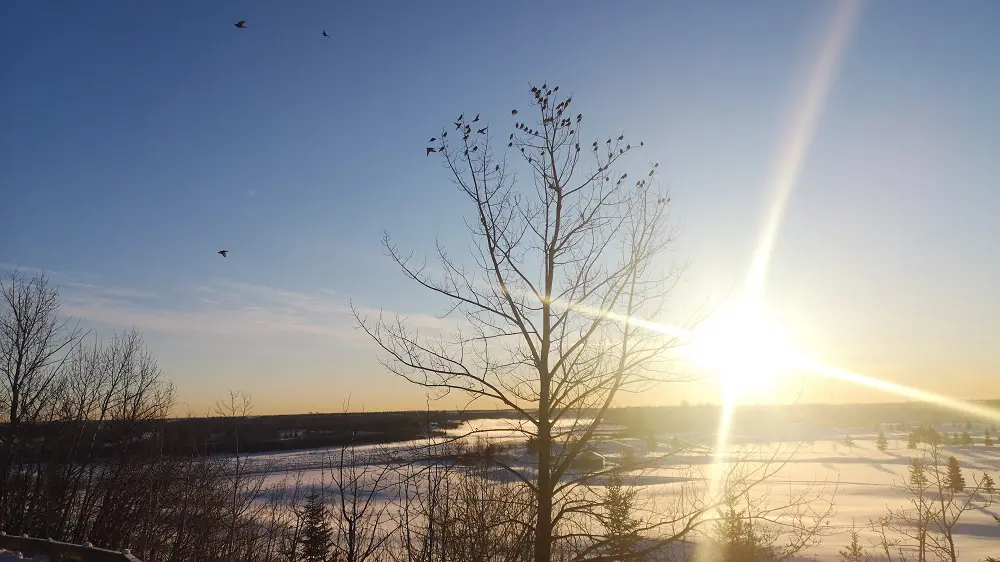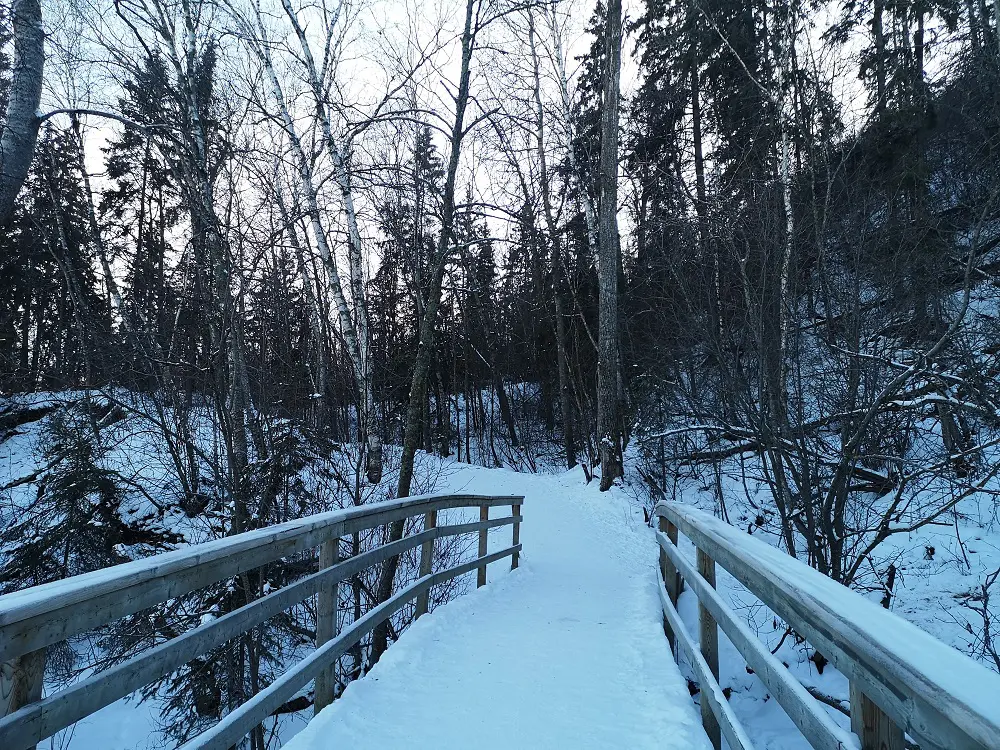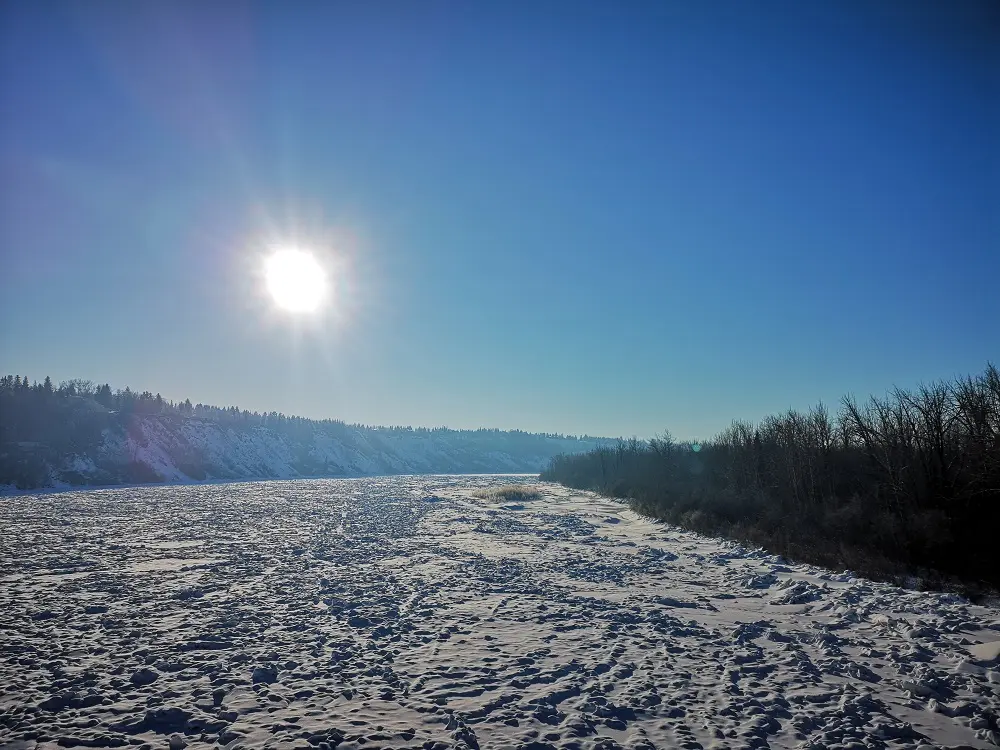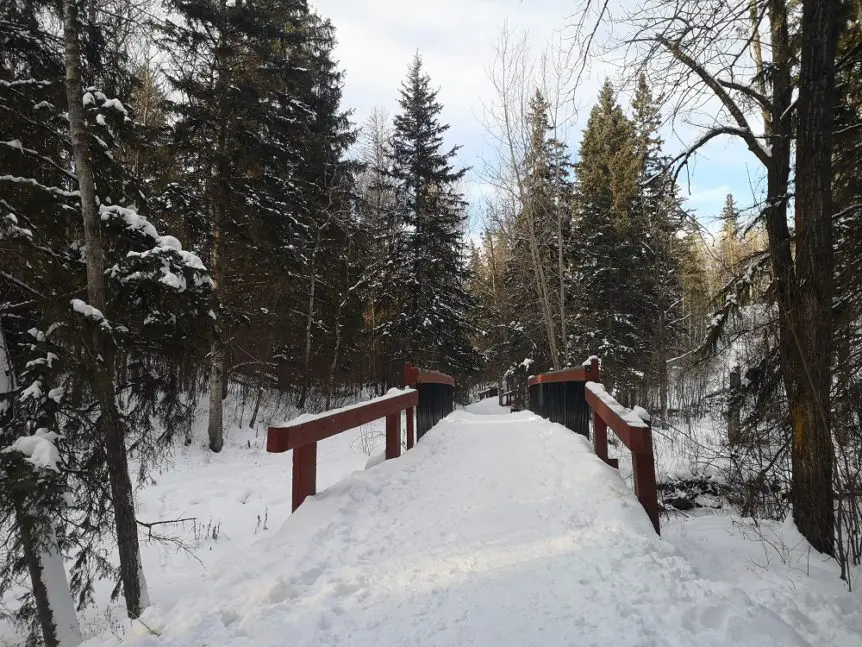Mark Gibbons is one of our volunteer ambassadors and the president of the Edmonton Outdoor Club (EOC), and they contributed to this guest blog as part of our winter activity blog series.
It’s pure winter magic.
That’s why I would describe a recent evening trek through the river valley with my group of nature enthusiasts.
There was enough ambient light and moonlight to see the dark trees silhouetted along the trail as it weaved along our route. As our eyes and senses adjusted to the night, we could see stars above us through the old-growth forest we were trekking through. The smell of the frozen forest, the crunching of snow under our ice grips, our breath coming out in condensation clouds untouched by the wind outside the forest… amazing.

It’s pure winter magic.
I became involved with the EOC in 2007. While the group might take its namesake from the city, it’s an open thirst for the outdoors. It also ventures beyond city limits for anyone with adventures throughout the Edmonton Metropolitan River Valley region, including exploring river valley trails in Devon and Parkland County.
For those interested in joining the Edmonton Outdoor Club on one of our adventures, signing up is easy and accessible. We strive to offer a variety of events, with some things geared for beginners, some more challenging, and lots of ‘somewhere in the middle’ stuff. And we attempt to keep events as low-cost as possible.

Mackenzie Ravine in Edmonton
Most of our outings take place in the Edmonton River Valley, but we occasionally visit neighbouring communities or travel even further to the mountain parks. We have regular monthly outdoor activities like hiking, camping, biking, inline skating, canoeing, cross-country skiing, and snowshoeing.
Whether going with a group or exploring the river valley on your own time, here are five cold-weather hiking tips for the winter months:
(1) Dress for the cold in proper layers (no cotton). Wear clothes that wick moisture away from your body and out through the layers to the exterior while having insulating layers to retain heat and an outer breathable shell to break the wind. Wet clothes are not desired as they conduct heat away from your body. The layer closest to you wicks moisture away from your skin (choose wool or synthetics such as polyester), then use one or more insulating layers (wool or synthetic fleece, etc.) and an outer breathable windbreak layer on top. Also, wear a good toque because most of your body heat is lost through your head.
(2) Wear a face mask or scarf to cover as much of your face as possible. Bring a spare one, as they can accumulate ice. Synthetics work well, such as a buff or balaclava.
(3) Wear insulated waterproof winter boots. This prevents feet and toes from frostbite that could happen if cold and wet snow enters your footwear. Put on extra socks that may range from synthetic to wool if you don’t have enough insulation, or bring extras along with you.
(4) Winter hiking can be fun, even on cold days. Try heading into forested trails, as they are often less windy than the trails on top of the river valley. This will help reduce the windchill factor.
(5) Wear good quality ice grips (the kind that straps over the boots). What you pay for is what you get when it comes to good ice grips. You never know in the river valley when a trail has had melt/freeze under fresh snow, and some trails have natural springs that continually run across them. You can always take them off later if they’re not needed, but it seems much harder to stop and put them on once you’ve left the trailhead.

A frozen North Saskatchewan river
However (and whenever) you decide to get out and enjoy the river valley trails, you have to go – because there’s always something waiting to be discovered in all seasons.
You can learn more about the Edmonton Outdoor Club.

